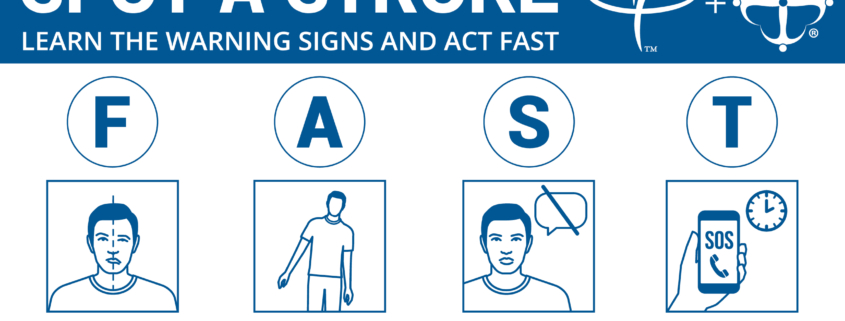Every 40 seconds, someone in the United States suffers a stroke. Every four minutes, someone dies.
Stroke is the fifth-leading cause of death in the United States, responsible for about one out of every 20 deaths.
As many as 80% of strokes may be preventable. But if someone is suffering a stroke, one of the most important factors is time. Knowing the signs of stroke, and what to do in that situation, could save a person’s life.
All you need to remember is F-A-S-T.
F: Face Drooping
Look at the person’s face. Does one side droop? Do they feel numbness on one side of their face?
Action item: Ask the person to smile. Is their smile lopsided or uneven?
A: Arm Weakness
Does the person feel numbness or weakness in one arm?
Action item: Ask the person to raise both arms above their head. Are they able to lift both arms? Does one arm drift downward?
S: Speech Difficulty
Is the person making sense when they speak? Are their words slurred?
Action item: Ask the person to say a simple sentence, like “The sky is blue.” Can you understand what they say?
T: Time to Call 9-1-1
If any of these symptoms are present, call 9-1-1 immediately. Tell the operator you think someone is having a stroke. Do this even if these symptoms disappear. Time is critical, so it is important to get them to the hospital right away. Be sure to note the time when the symptoms appeared.
Action item: Call 9-1-1!




